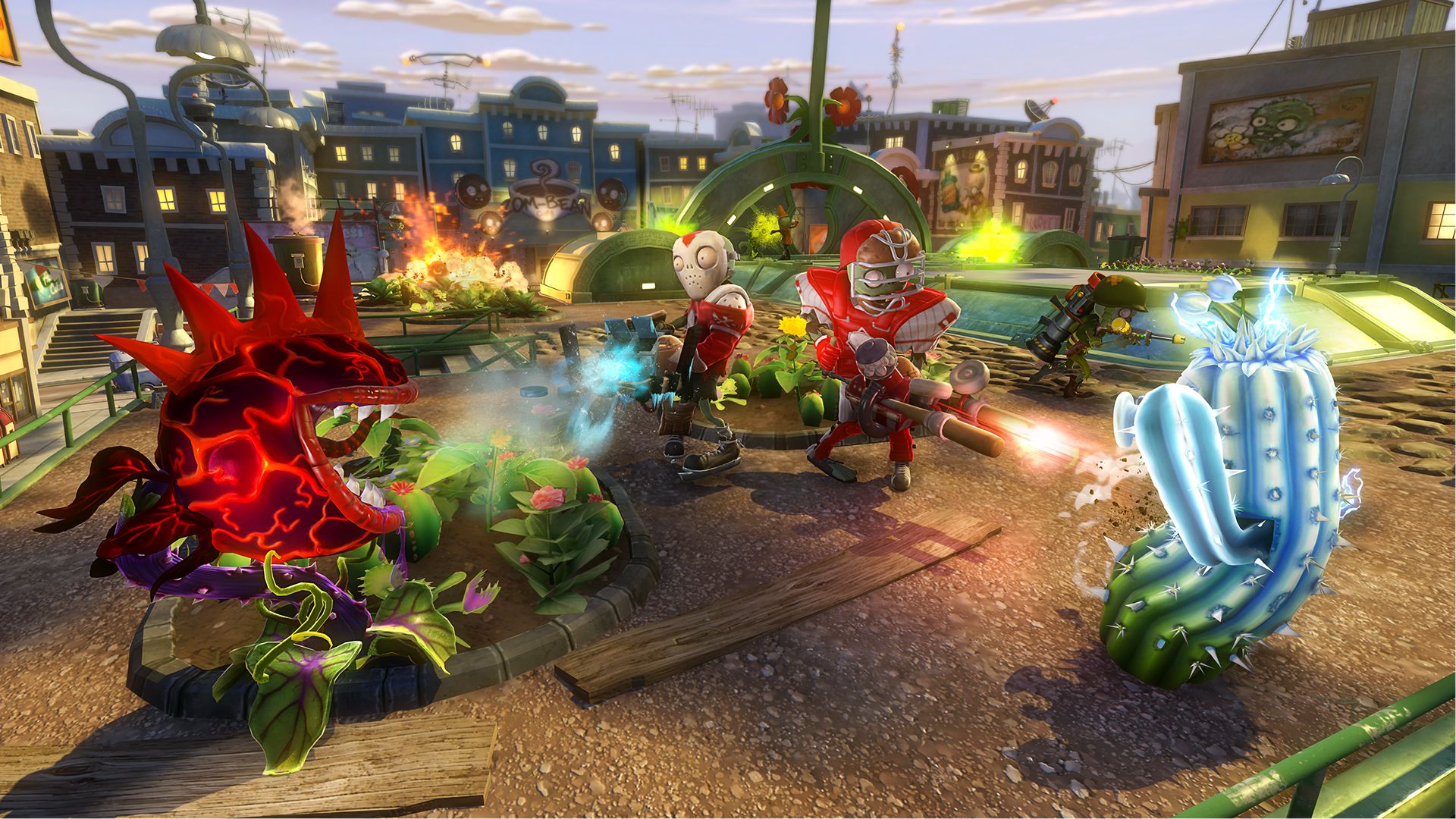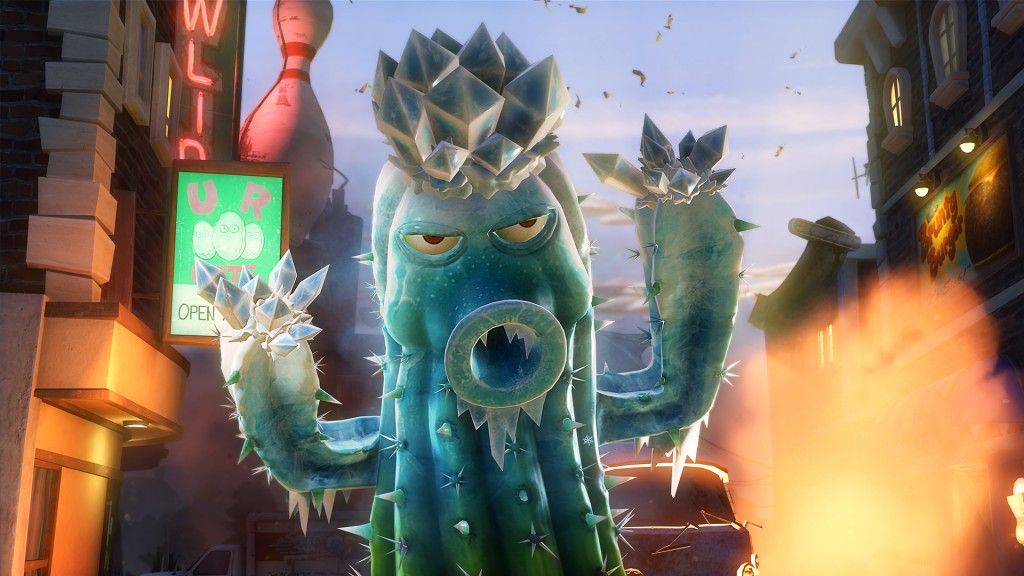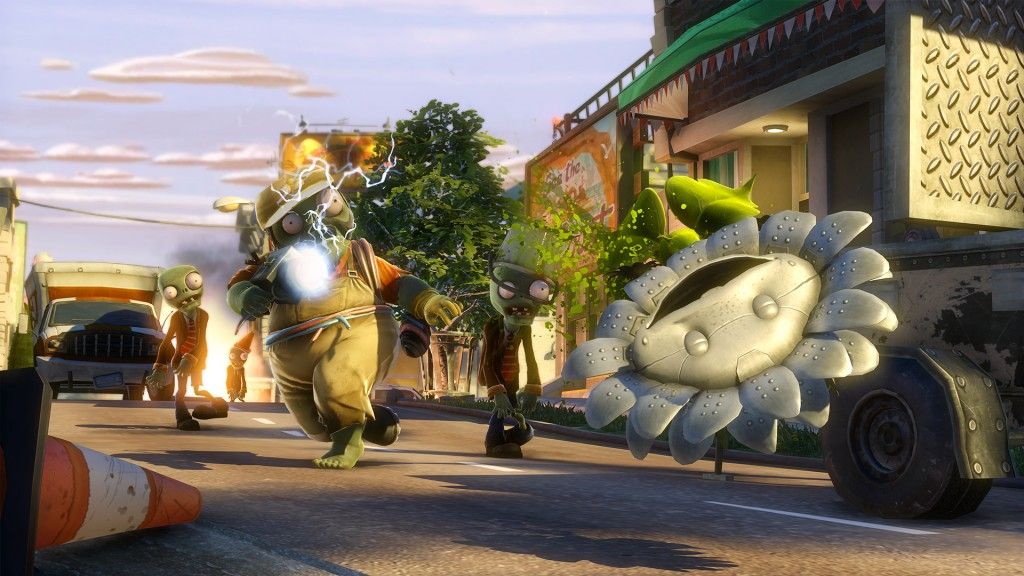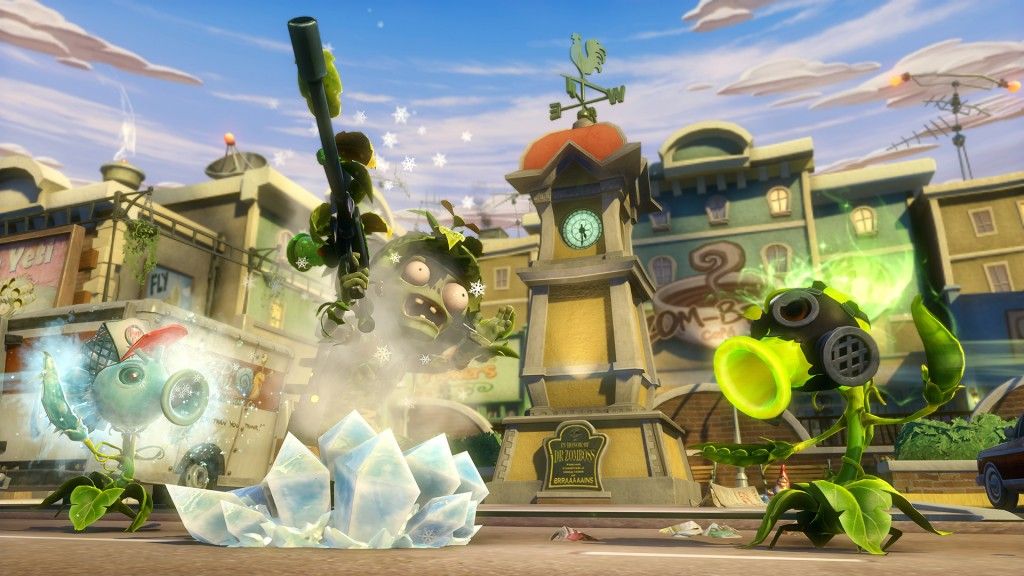There is something funny to me about the game's subtitle: Garden Warfare. Obviously it is a slight towards Electronic Arts' (Plants vs. Zombies: Garden Warfare's publisher) biggest rival in the console-shooter realm, Activision and their Call of Duty: Modern Warfare franchise, but it is more representative of the actual game more than the developers may or may not think.
When you play a game like Modern Warfare, you get to turn the thinking part of your brain off and just have a slobber-knocking time with your friends without much care for anything else. That is exactly the case with Plants vs. Zombies: Garden Warfare. While there are major aspects of the game that could benefit from expansion or growth over the course of its development and after its release, the current product is indicative of a game that can tap into every primal human instinct and thus be played ad nauseam.
At its core, Plants vs. Zombies: Garden Warfare is a third-person shooter with RPG elements interspersed throughout. These elements are in the form of four classes that make up either side's characters. In the current build, Plants are comprised of the Peashooter (damage dealer), Sunflower (healer/enfeebler), Cactus (ranged damage dealer), and Chomper (melee damage dealer/enfeebler). Zombies are comprised of the All-Star (variable damage dealer), Engineer (support), Foot Soldier (damage dealer), and Scientist (healer/enfeebler). All classes are equipped with a primary weapon and three special powers synonymous with their class. Except for the Foot Soldier and Sunflower, no one class is really shoehorned into a specific role. Even the healing and enfeebling classes can get down and dirty in combat, hold their own, and not have to worry about hanging back due to inefficiency.
Each side offers something different with each character and thus their roles are not symmetrical i.e. boring. With Zombies, I found myself drawn most to the Foot Soldier, as the others simply did not feel as immediately effective on the battlefield as it did. The Foot Soldier is certainly the most tactical of the four; equipped with an automatic rifle, in addition to the rocket launcher, jet pack and smoke bomb powers. Between the two, jobs on the Zombies have a bigger air of specificity to them than those on the Plants side.
Plants do offer more variability when it comes to supporting your teammates and laying waste to Zombies on the battlefield. I was partial to the Peashooter and Cactus mostly, but the Sunflower was fun to play with as well. The Peashooter and Cactus are similar (in fact, maybe too similar) in the aspect that they can both deal heavy amounts of damage in short amounts of time. Special powers are what separate the two from resembling Siamese twins. The Peashooter can dig in and turn itself into a turret, while the Cactus has the ability to launch a garlic drone that make the skies rain both garlic and corn-on-the-cob airstrikes.
The action on the battlefield is intense nevertheless. The desire to win the match is somewhat augmented by three personalized challenges that are posed to each played before each bout. Truth be told, I was too engrossed in customization and the changing face of the battlefield to worry about the challenges. However, they did seem to be accurate in terms of how I played, as I saw multiple notifications for achieving them arise, even after not putting in much effort to complete them.
Default weapons in conjunction with each character's special powers make for a delightfully messy and active experience. The game lends itself to a more stick-and-move style of play. Much like the cartoons I referenced earlier, everything is constantly in motion. Thus I never saw anyone hanging back or for lack of a better term, "camping;" the action was largely fluid and we managed to have some pretty close games in the process. Close-quartered combat is the meat of the gameplay, however a lack of melee options is a huge disappointment. I saw more production in kills when my team and I worked together - lone wolves will not favor as well unless they are highly skilled or utilize a job that is akin to most regular shooters, like the Cactus, Peashooter, Sunflower, or Foot Soldier.
The characters and environments themselves are beautiful in their current state. Everything is vibrant and teeming with color. The colors of each enemies weapons are based on a specific scheme of purple for zombies and green or yellow for plants, making it easy to discern one another on the battlefield. The art style, combined with the aforementioned vibrancy, is akin to that of a Saturday morning cartoon or graphic novel. It is just the right amount of silly, without looking too over-the-top or juvenile.
Customization is a significant piece of the game, and is also a factor that decides the look of the battlefield before the match even begins. Costumes that we were shown as examples ranged from the "Power Flower," a Sunflower that fired electrically charged projectiles, to the "Raged Chomper," which was essentially a Chomper in berserk mode. There was not much substance to this aspect of the game in what I saw, but the developers commented that they are taking a, "Mass Effect approach" to the game's future, promising new (and free content) to come out on a regular basis after launch. So while what we had at our disposal was slim, the potential is that there will be a plethora of costumes to choose from as the game ages, thus enhancing the diversity of the battlefield with each update.
Plants vs. Zombies: Garden Warfare in its current state simply feels like an experience that may wane after a short amount of time. A healthy infusion of varied maps, costumes, and more playable characters will improve the game's outlook. Otherwise, you can ignore these aspects, turn your brain off, and have a fun time.
Plants vs. Zombies: Garden Warfare is being developed by PopCap Games and will be published by Electronic Arts for the Xbox One and Xbox 360 on February 18th, 2014 at the price points of $40 and $30, respectively.




